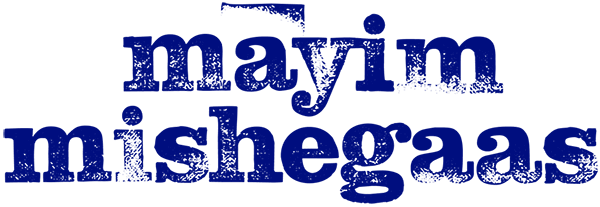
When I was in college, I tried yoga for the first time. UCLA had fitness classes you could sign up for, and I had heard a little about yoga but assumed it was for crunchy granola hippies…But as someone who was finally out of my parents’ home and wanted to try new things, I decided to give it a go.
At first, I felt really uncoordinated and lost, as they were using terms and names for things in Sanskrit I had never heard before. I followed other people, though, and the instructor helped me along. What I liked a lot was the ending pose where you lay flat on your back and she would talk you through a sort of meditation relaxation time. I found this the first experience in my life of actively pursuing serenity in my head. I liked it a lot.
(As an aside, when I was in college, I also tried out a figure drawing class that used nude models, and that was not nearly as successful a “trying new things” effort for me as yoga was…)
I continued to take yoga here and there in college, and eventually found a studio in an instructor’s home where he held small, very intense classes for about a dozen of us twice a week. By this time, I was really getting into yoga and I excelled at many poses. I was not the most flexible person, but I was very strong and very motivated to do the poses “right.” I know being competitive isn’t a requirement for yoga and in fact, the notion of serenity that yoga inspires isn’t always compatible with being a competitive yoga participant, but I found my way and tried to relax about being the best and used this class as an opportunity to learn to be okay with me just as I am.
I especially loved the meditations this instructor would lead us through at the end of class. He would have us lie down and relax into our breath and he would talk to us as we relaxed. He told us we did great and that we gave ourselves a gift by taking care of our bodies. Huh!? I had never thought of it that way. At first I thought, “That’s too hippy dippy for me,” but the more he talked about it, the more I started to like it. He would say we are all beautiful parts of the world and to be kind to people when we left. He said to make a protective bubble around ourselves as we left that space, because we had made something sacred there. Wow. I always felt a kind of high when I left his studio and going to yoga twice a week really kept me content and fit.
Then I got pregnant…Things changed. My life became a lot more complicated. My schedule changed; I was finishing my thesis. I was preparing for motherhood and I started growing too…pregnant to do yoga as I had been doing it.
I started to go to a prenatal yoga class with my BFF in her neighborhood because she had been going and asked me to come with her. She was about six months ahead of me in pregnancy. All of the poses in this prenatal yoga class were adjusted for pregnant bellies, and the meditations and resting poses were all about positive thoughts and wishes for labor and birth. I loved it.
Our instructor was this magical very “L.A.” funky pixie of a woman with long, flowing hair and a calming voice and wooden beaded bracelets on both wrists. She moved slowly all of the time and she just exuded calm and cool. I was never really taken by those L.A. types before, but we all had the biggest girl crush on Gina!
One of the unexpected things I learned to harness in yoga was the revelation that my mind had the power to control my body’s perceptions of pain and discomfort. A lot of yoga poses are very uncomfortable and part of the yogic practice is to learn not only to master the poses despite the uncomfortableness, but to use the physical sensations of discomfort as a signal to your brain to find ways through the pain. Gina even forced us to hold uncomfortable positions (such as a deep squat) for a very long time and to work through it mentally so you could work through it physically.
How can you do that?
Well, the breathing techniques you learn as part of any traditional yoga practice are designed to draw more oxygen into your body and to regulate your blood pressure and your heart rate. It’s science, folks: breathing in certain ways and thinking in certain ways about what you’re feeling can take away pain and the feelings of fear and panic we feel when things hurt, both physically and emotionally. And learning new ways to think about the discomfort affect how you handle it. So for example, if you are in a painful pose and you think “Uggghhh this hurts so bad I hate this when will this torture be over uuuggghhhh!!!!” you tense up, you clench your muscles, you start using up a lot of oxygen, and your heart rate and blood pressure increase.
Gina made us hold uncomfortable poses for so long and talked us through it. She gave us a vocabulary of “breathing into the pain” and “relaxing into the discomfort” and she showed us how thinking the following would be much more helpful than freaking out: “This is a hard pose. I am feeling a lot of pressure and discomfort. It won’t last forever and I am strong and capable of breathing through these sensations. They will pass. I can do this. I can do this.”
Gina was preparing us for giving birth.
Not every yoga instructor is this deliberate about it, but Gina believed – as do most good prenatal yoga instructors – that the positions of yoga and the sensations of discomfort you often feel when trying a new or challenging pose can be used as metaphors for labor. Mastering your mind can have a tremendous impact on how you handle your body.
Learning to control your breath, learning to control your brain’s interpretation of discomfort, and learning to summon your brain’s natural ability to overcome discomfort is what women who seek to give birth without the use of drugs do. It’s how we birth babies.
Many of you may be asking why in the world you would want to give birth without drugs. Well, seeing Ricki Lake and Abby Epstein’s documentary “The Business of Being Born” is the best thing to do if you are curious about that or if you are ever considering becoming a parent. It explains how we view labor, why we have been raised to think drugs don’t matter, and what we can do about it to improve the health of our babies and ourselves.
Although many many women choose to use drugs during labor and their babies turn out just fine, the benefits of natural labor are scientifically undeniable. Statistically speaking, babies born without drugs experience, better rates of breastfeeding, and less time spent in the NICU (neonatal intensive care unit). Babies born without drugs have a higher chance of requiring further intervention when being born (such as vacuum extraction or forceps delivery), higher rates of breastfeeding and alertness post-birth, lower rates of antibiotic administration after birth, and fewer nervous system effects that have ‘trickled down’ because of the strong drugs a mom has ingested; namely, many drugs given during labor cause decreased oxygen to the baby, less alertness, and a lowered heart rate in the baby (which can lead to a call for a C-section). In short, less drugs in your system and your baby’s system (they do ingest them, it’s true) means less complications post-delivery and a more alert baby.
(And since in this day and age I have to say this, please read my anecdotal parenting post before you post about how your baby born with drugs was more alert than your baby born without, or how labor without drugs caused some horrible snowball of medical issues. There are just as many horror stories about women given drugs and having horrible medical complications, too. There are many variations in labor, and I am speaking about general statistics and general guidelines for labor as recommended by major medical organizations all over the world.)
The tools Gina gave me in that prenatal yoga class contributed to my giving birth to two sons without pain medication – one in the hospital after three days of labor on and off, and one in my living room in under three hours, unassisted until I pushed him out. Knowing that pain is temporary, knowing that my brain can breathe itself and talk itself through the surges of contractions that come and go much more than the pain of holding a squatting position in yoga class does, and knowing that my body was made to give birth while allowing me to be present without the use of drugs and narcotics are the gifts of prenatal yoga.
As a Certified Lactation Educator Counselor and a person who is often called upon by friends and acquaintances to talk to women before they give birth about labor, breastfeeding, and natural (evolutionary) methods of parenting, I am dismayed when I hear of women who “want to try to give birth naturally” but when I ask what they are doing, they answer, “just planning to try.”
Natural birth is not something you just plan for without preparing for it. It’s like climbing a big mountain. You don’t just try, you get the proper equipment, read up on it, talk to people who have done it, and train for months.
It’s the same with natural labor. Here are the things I suggest pregnant women interested in really making an effort to deliver without drugs do:
- Read books about the actual process of giving birth, rather than assuming it will be like it is in the movies or on TV shows. For instance, Ina May Gaskin’s Guide to Childbirth – the mother of modern midwifery writes a modern book for women giving birth in all sorts of scenarios, with unbiased suggestions for understanding the birth process, including a powerful set of healthy birth stories of varying kinds: long, short, intense, mellow, etc!) Also recommended is her original book, Spiritual Midwifery, which was based on her experiences naturally birthing babies with almost no c section at “The Farm,” a communal living space in Tennessee since 1971; and this article about labor induction risks, and this great general article by a respected MD on epidurals and their effects.
- Talk to women who have given birth without drugs and ask what it’s really like. Your local La Leche League holds free meetings open to pregnant women in your community.
- Self-hypnosis (there are CD programs to do on your own which I did for both of my labors) or a class in hypnosis for labor helps you master techniques of pain management with meditations, positive phrases you use during labor, imagery to utilize as you give birth, and a vocabulary for understanding your pain and processing it. Hypno-birthing is a well-used program, but if you contact a local midwife in your city, they can also make suggestions.
And it bears repeating, even when it’s not International Yoga Day: prenatal yoga is one of the best things to do to prepare for natural birth along with these other preparatory measures.
If you are ever pregnant, I implore you to consider prenatal yoga as part of your training for whatever kind of labor you have. But especially if you are considering the benefits of natural labor – and there are many! – make yoga a part of your mental and physical training for climbing that metaphorical mountain!
And since today is International Yoga Day, I send a hearty “Namaste” (a Sanksrit salutation that means “I honor your light”) to all of you yoga practitioners out there. I used to think yoga was for hippies, but now I know that the health benefits, the mental discipline, and the ways you are challenged in yoga are invaluable for everyone.
Namaste!




 Read More From Mayim
Read More From Mayim
Grok Nation Comment Policy
We welcome thoughtful, grokky comments—keep your negativity and spam to yourself. Please read our Comment Policy before commenting.